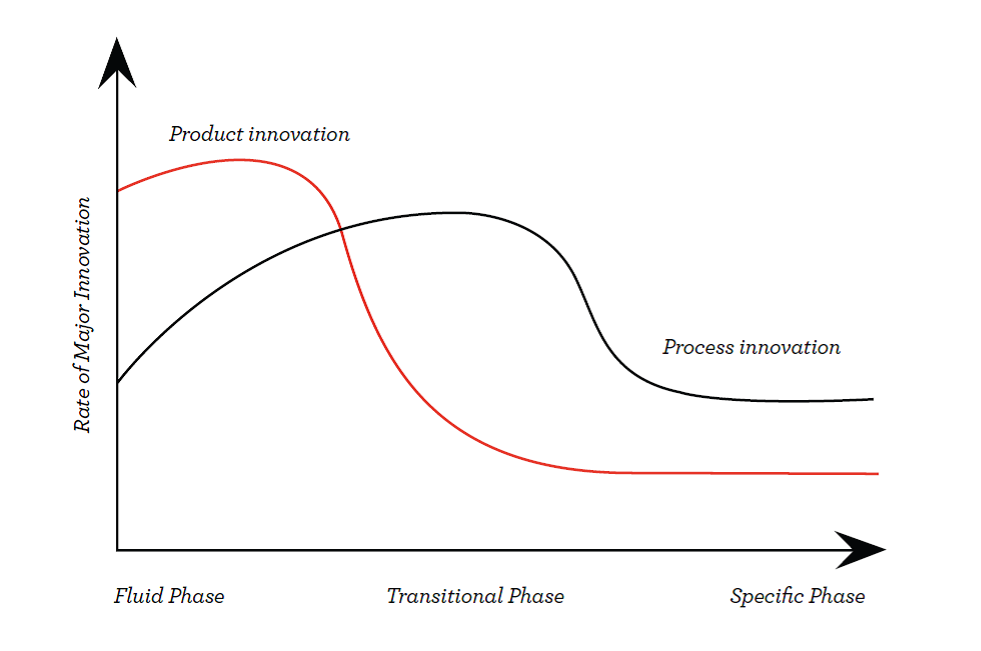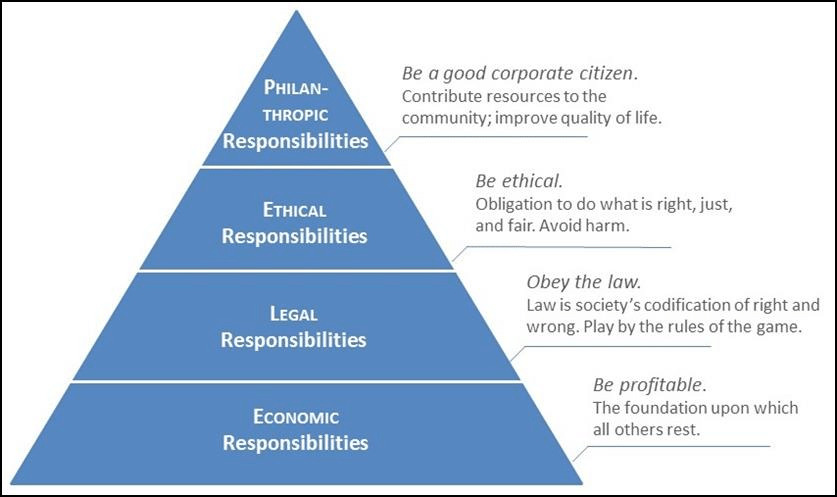Billions of people create trillions of connections through social media each day, but few of us consider how each click and key press builds relationships that, in aggregate, form a vast social network. Passionate users of social media tools such as email, blogs, microblogs, and wikis eagerly send personal or public messages, post strongly felt opinions, or contribute to community knowledge to develop partnerships, promote cultural heritage, and advance development. Devoted social networkers create and share digital media and rate or recommend resources to pool their experiences, provide help for neighbors and colleagues, and express their creativity. The results are vast, complex networks of connections that link people to other people, documents, locations, concepts, and other objects. New tools are Continue reading
Modern Management Approaches
Discontinuous Improvement – Abernathy and Utterback Model
The common innovation process happens in a set frame, following certain rules and ways of thinking. This ‘game played’ by competitors is to innovate by doing what has been done before like product or process innovations or even position and paradigm innovations, but doing it better. In this competition of ‘playing the same game’ some firms manage to do better than others and can gain a competitive advantage through these innovations, but the ‘set of the game’ is accepted and do not change. Very rare something happens that breaks up this framework and changes how the game is played. This will not happen every day but when this arises the rules and boundaries of a market change rapidly. This will Continue reading
Carroll’s Pyramid of Corporate Social Responsibility
In the past, the common perception of a business responsibility was to maximize their firm’s profit. This is because businesses were perceived to always put the shareholder interests first. However, businesses are moving towards impacting the socials and environments. Several studies have found that businesses now have direct responsibilities to various other stakeholders which include preventing the harm of human rights and ensuring that there are solutions available if abuses occur. The modern view of business responsibility demands companies to help in problems relating to public welfare. As firms have no utmost responsibility for these unpleasant situations, philanthropic responsibilities are still not mandatory. However, due to a decrease of social institutions that provide help to the communities, people have higher Continue reading
Blue Ocean Strategy – Summary and Examples
Strategy involves standing out from the competition and making choices that give the company a unique and valuable position by offering distinctive products and services. Competitive advantage and profitability can be achieved simultaneously by approaches that create consistent internal synergies and combine a company’s operational activities efficiently. Strategies are formed at various levels of the organization. However, a typical organizational structure incorporates strategies at 3 specific levels: corporate, business and functional. Corporate strategy defines a company’s holistic growth and management direction pertaining to its various businesses, products and services. Business strategies, on the other hand, are established at the divisional levels and typically focus on enhancing the strategic business unit’s competitive position in its industry. Functional strategies aim to maximize Continue reading
Divisional Performance Measurement
Performance measurement is the performance-based management process which is flowing from the organizational mission and the strategic planning process. Divisional performance measurement includes the objective and subjective assessments of the performance sub-units of an organization such as divisions or departments. Divisional performance measurement are effective in ensure that a strategy of organisation is successfully implemented by monitor a divisions effectiveness in satisfying its own predetermined goals or stakeholder desires. Divisional performance measures may be based on non-financial as well as on financial information. Divisional Performance Measurement – Financial Measures 1. The Return on Investment (ROI) Nowadays, most of companies concentrate on the return on investment (ROI) of a division that is profit as a percentage in direct relation to investment Continue reading
Blue Ocean Strategy – Shift from Red Oceans to Blue Oceans
“Blue Ocean Strategy” by W. Chan Kim and Renee Mauborgne is a strategy that challenges companies to distance itself away from fierce competition by establishing uncontested market space that makes existing competition irrelevant. One of the reasons why the authors have used the colors red and blue is to describe the market. Red ocean is the market space where industry boundaries are defined and known. The red ocean contains a massive conflict between companies where they are constantly trying to outperform each other to achieve a greater share or demand. When market spaces become crowded with competitors, companies try out perform each other and profits and growth is greatly reduced due to cutthroat style competition which turns the red ocean Continue reading



